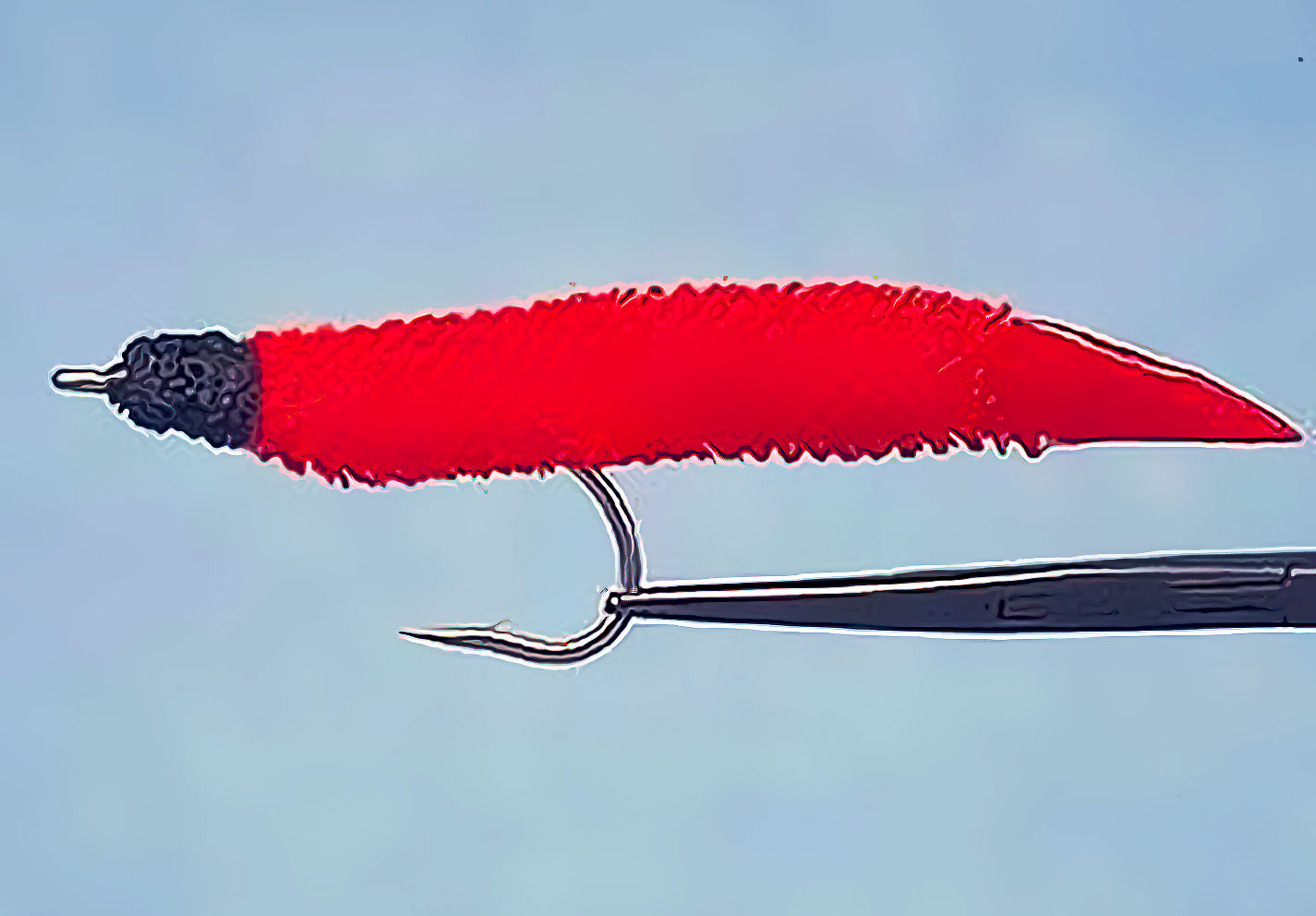Several years ago I finally got the chance to fish a worm swarming on Cape Cod. This is a phenomenon I wrote about nearly 30 years ago in my book A Fly-Fisher’s Guide to Saltwater Naturals and Their Imitation (long out of print, but you can find used copies on Amazon and eBay.)
In a nutshell, worm swarmings (often erroneously referred to as “the worm hatch”) occur when sexually mature annelid worms—in the Northeast we’re talking about clamworms of the genera Nereis or Platynereis—leave their burrows to mate, sometimes in huge numbers. When enough spawning worms are present in an area, striped bass will feed on them selectively, so the pattern you fish should approximate the size, shape, and action of the natural. My first few encounters with swarming worms were incidental; in my ignorance, I was skunked.
My friend Harry Graff has a home on the Bass River in South Dennis and has fished this event for decades. Understanding the science behind worm swarmings is helpful, but it’s no match for experience—or for having your finger on the pulse of the river.
Harry dropped me an email to tell me the game was on. In his area, swarmings occur in the vicinity of Memorial Day weekend. They tend to begin at dusk and end when it gets dark. The bulk of it, he notes, often takes place over three consecutive evenings.
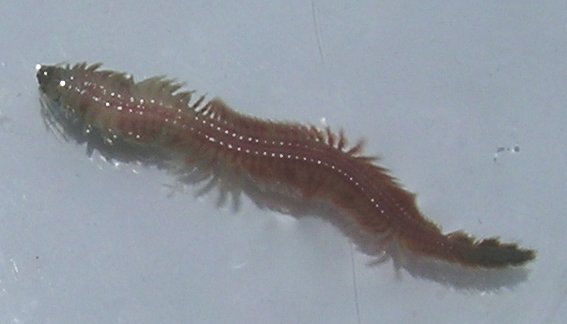
I pulled into Harry’s driveway at about 7 p.m. The tide was still rising as we got to the water. The Bass River is a good early-season spot, as the fish will arrive here before we see them on the northern side of the Cape. In my mid-20s I caught my first striped bass in this river, where it runs by Wilbur Park in Yarmouth. I used a soggy glass Garcia Conolon bass-bug rod (the rod my father had first let me use at age seven) to fling a small Lefty’s Deceiver into a subtle current seam. As if on cue, the fish pulled. It wasn’t big—certainly no more than 16 inches—but I don’t know that I’ve ever caught a striped bass that has thrilled me more.
There were lots of small fish in the river, Harry said; he’d taken one last night that was only 7 inches. Small fish are a promising sign; the fishery isn’t what it was back in the late ‘90s—no one seems to know why.
We stepped into the water, and it was only moments before I spotted a worm. The spawning form of the worm—referred to as the heteronereid or epitoke in the scientific literature—is shorter and stouter than the non-spawning adult. This worm was approximately 2 inches long and about a quarter-inch in diameter, reddish in color. During the process of sexual maturation, the rearmost legs of the worm (parapodia) transform into tiny scoop-like oars–only slightly in some species, radically in others such as the worms at hand. Swarming worms are amazingly proficient swimmers. Their pirouettes at the water’s surface call to mind skywriting airplanes.
Much has been made about the flies needed to fish the swarmings. The way some authors have written about it, it’s nothing short of voodoo. For one article submission we received at TFFM, the Rhode Island guide who was featured in the piece had refused to let the author photograph his worm fly. (I’ll let you guess how that ended.)
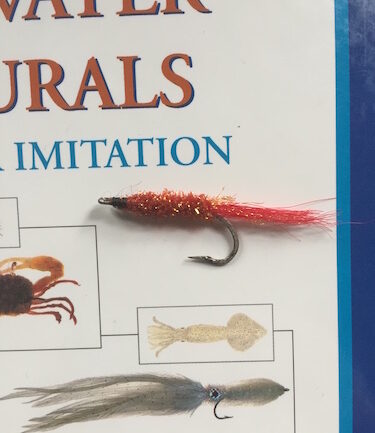 At the other end of the swarming-worm-disorder spectrum is Harry Graff. The flies Harry uses during the swarmings are straightforward. Harry handed me a 2-inch red bucktail with a body of small orange cactus chenille. Dressed on a 1/0 carbon-plated hook, it was well-worn from years of action. The fly Harry was using was Page Rogers’ Cinder Worm—basically a length of red velvet tubing fastened to the hook and a head of black chenille. Harry likes this fly, he says, because it’s very durable.
At the other end of the swarming-worm-disorder spectrum is Harry Graff. The flies Harry uses during the swarmings are straightforward. Harry handed me a 2-inch red bucktail with a body of small orange cactus chenille. Dressed on a 1/0 carbon-plated hook, it was well-worn from years of action. The fly Harry was using was Page Rogers’ Cinder Worm—basically a length of red velvet tubing fastened to the hook and a head of black chenille. Harry likes this fly, he says, because it’s very durable.
I wanted to satisfy myself that the fish were actually being selective, so I tied on a white Tabory Snake Fly, which I’ve used to catch everything from smallmouth bass to tarpon. I quickly picked up a 12-inch schoolie on the Snake Fly, but nothing after that. About five minutes later, Harry had landed his second fish and had missed probably a half dozen due to short strikes. That was enough to convince me. I tied on Harry’s worm fly.
I worked the fly with a retrieve appropriate to the natural—hand-over-hand, briskly, but only 2 inches at a time. It wasn’t long before I felt my first tug—short, as were many of Harry’s. It felt as if the fish nipped the tail. I also think a 1/0 hook is a bit large for fish in the 12-inch range.
Ten minutes later, the event was in full swing. Upriver or down, as far as you could see, the surface was dimpled with the swirls of feeding stripers.
The house on the river has been in Harry’s family since the 1950s. Harry’s father had done all of his fishing with a spinning rod. Harry recalls evenings like this as a kid when the river came alive with activity but the fish wouldn’t look at a Rapala. The first time I experienced a swarming, I knew virtually nothing about the life cycle of clam worms. I simply knew the fish weren’t interested in whatever I showed them. This evening I only actually saw that one worm, so it’s easy to see how an angler can get stumped by such an occurrence.
Anyone can go down to the water and cast flies—and very often this approach pays dividends—but it always helps to be mindful of your environment, particularly when you know the fish are there but they’re not cooperating.
If the fish are being selective, first try to approximate the size and shape of what they’re feeding on. I recall one September afternoon along Plymouth Beach many years ago. Large schools of striped bass in the 22- to 24-inch range were gorging themselves on 6-inch silversides. I was able to hook up consistently with a 6-inch white Deceiver. The action was prolific enough that it left my thumb ragged. I watched a guy standing on the jetty with a surf rod as he hurled a 14-inch bathtub toy into the breaking schools. Cast after cast went ignored until finally—I presume in frustration—he reeled up and went home. Had the man simply changed to a lure that more closely matched the size of the prey, I’m convinced he would have landed his share.
Sometimes what the fish are eating isn’t so obvious. In such situations, you’ll do well to look around the water’s edge to see what might be available. More than once I’ve experienced striped bass feeding selectively on grass shrimp just under the surface. In the moonlight I could see their sides flash white as they took; they bulged the surface similarly to a trout feeding subsurface on emergers. Had I not shined a flashlight along the shoreline I never would have seen the many thousands of shrimp flitting about. Only then, after trimming my black Deceiver to an
inch and working it in 2-inch strips, could I catch fish—one after another, and I was surprised at how hard they hit.
The rule of thumb in selective feeding is to first match the size of the prey and then the action. Many will disagree with me, but I generally don’t consider color of much importance (I’ll change retrieves before I change the color of a fly in which I have confidence). And fish don’t see color at night, so I think black is as good a color as any. After discovering selective feeding on grass shrimp, I began carrying a few suggestions in my box—simple reverse-tied bucktails with wool bodies on a size 2 or 4 hook, an inch or so long, solid black for night fishing. When I’ve found the bass are keyed in on shrimp after dark, this fly has done the trick.
When night proper fell on the river, the worm swarming turned off, as Harry had said it would. We’d each landed some fish, but lost many more.
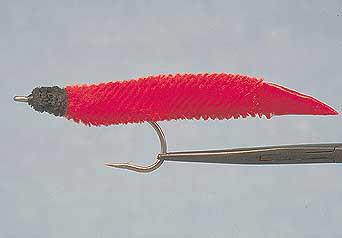
I met Harry through Henry Weston Outfitters in Pembroke, one of the many fly shops that popped up along coastal Massachusetts when the striped bass fishery made a comeback in the early 1990s (and after A River Runs Through It caused the industry to explode). This was the first time we had ever fished together. I think I’m going to have to give him a call and see if I can finagle another invitation.
I left Harry’s and made it over the bridge in time to get to Katie’s Burger Bar in Plymouth before the kitchen closed. After an evening of fishing on the South Shore you could do worse than to sit down to a Hell Burger and an IPA. I’ll be glad when we can sit at the bar again. Beer and burgers always taste better when you sit at the bar. Piscator non solum piscatur.
by George Roberts
George Roberts is TFFM’s Acquisitions Editor.
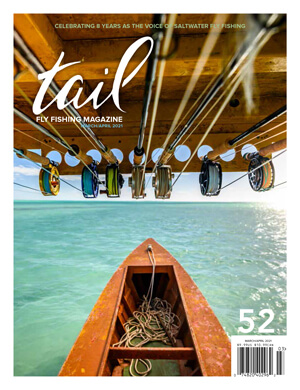 SUBSCRIBE TO TAIL FLY FISHING MAGAZINE
SUBSCRIBE TO TAIL FLY FISHING MAGAZINE
THE VOICE OF SALTWATER FLY FISHING

